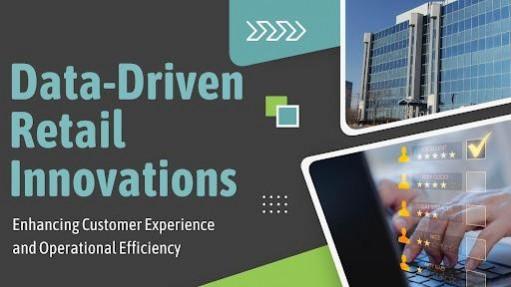
In the ever-evolving retail landscape, the adoption of advanced forecasting techniques has become pivotal in maintaining competitiveness. Sijo Valayakkad Manikandan, a renowned expert in retail analytics, explores the transformative power of data-driven forecasting models in enhancing both customer experience and operational efficiency.
Revolutionizing Inventory Management through Demand Forecasting
The retail industry has evolved significantly in demand forecasting, transitioning from traditional methods like ARIMA to advanced machine learning models such as Random Forests and Gradient Boosting. These sophisticated algorithms capture complex consumer behavior more accurately, offering retailers numerous benefits, including reducing stockouts by maintaining optimal stock levels and minimizing excess inventory. This evolution not only ensures product availability and higher customer satisfaction but also reduces storage costs and the risk of obsolescence, especially for short-life cycle products.
Personalized Recommendations as Sales Catalysts
Predictive analytics has become a powerful tool for personalizing customer shopping journeys by analyzing individual preferences and behaviors. Retailers use techniques like collaborative and content-based filtering, while deep learning models add sophistication by capturing nuanced customer patterns. Personalized recommendations significantly boost engagement metrics, such as click-through rates and time spent on site, and increase conversion rates and average order value, ultimately driving higher revenue and enhancing customer satisfaction.
Trend Analysis for Strategic Market Adaptation
Retailers are utilizing trend analysis techniques such as social media monitoring, sentiment analysis, and web scraping to keep pace with changing consumer preferences. These tools provide real-time market insights, enabling retailers to align product offerings with emerging demands. Beyond product development, trend analysis supports market leadership by allowing retailers to capture early market share and build brand loyalty. It also aids strategic planning, informing marketing strategies and inventory management, ensuring retailers can proactively respond to market shifts.
Enhancing Operational Efficiency with Predictive Models
Advanced forecasting techniques have improved retail efficiency by optimizing staffing, supply chain, and logistics. Predictive scheduling aligns staff with customer traffic, enhancing service and reducing labor costs. In supply chain management, forecasting predicts demand, reduces lead times, optimizes inventory, and lowers transportation costs. Additionally, it streamlines logistics, reduces waste, and improves cash flow, cutting overall costs for retailers.
Customer Satisfaction and Loyalty Through Accurate Forecasting
Accurate forecasting plays a direct role in enhancing customer satisfaction by ensuring product availability, reducing wait times, and enabling personalized services. Retailers often use metrics like Net Promoter Score (NPS), Customer Satisfaction Score (CSAT), and Customer Effort Score (CES) to gauge the impact of forecasting on customer experience. Improvements in these metrics are often directly linked to advanced forecasting capabilities.
Navigating Challenges and Ethical Considerations
While the benefits of advanced forecasting are clear, retailers must navigate challenges related to data quality, ethical considerations, and the balance between automation and human insight. Ensuring the quality and completeness of input data is critical for forecast accuracy. Additionally, retailers must handle customer data ethically, respecting privacy, ensuring data security, and addressing potential biases in algorithmic decision-making.
Future Directions in Retail Forecasting
The future of retail forecasting is poised for even greater advancements with the integration of the Internet of Things (IoT) and advanced AI algorithms. These technologies will enable real-time data collection and analysis, leading to more accurate and dynamic forecasts. Moreover, future models will increasingly incorporate diverse external data sources, such as social media trends, weather patterns, and economic indicators, offering a more comprehensive view of consumer behavior.
Sijo Valayakkad Manikandan's exploration of data-driven retail innovations highlights the transformative potential of advanced forecasting techniques. As retailers navigate challenges and embrace emerging technologies, those effectively leveraging forecasting will gain a competitive edge in the dynamic market landscape. His insights offer a valuable roadmap for the future, where data-driven forecasting continues to shape the retail industry's evolution.








